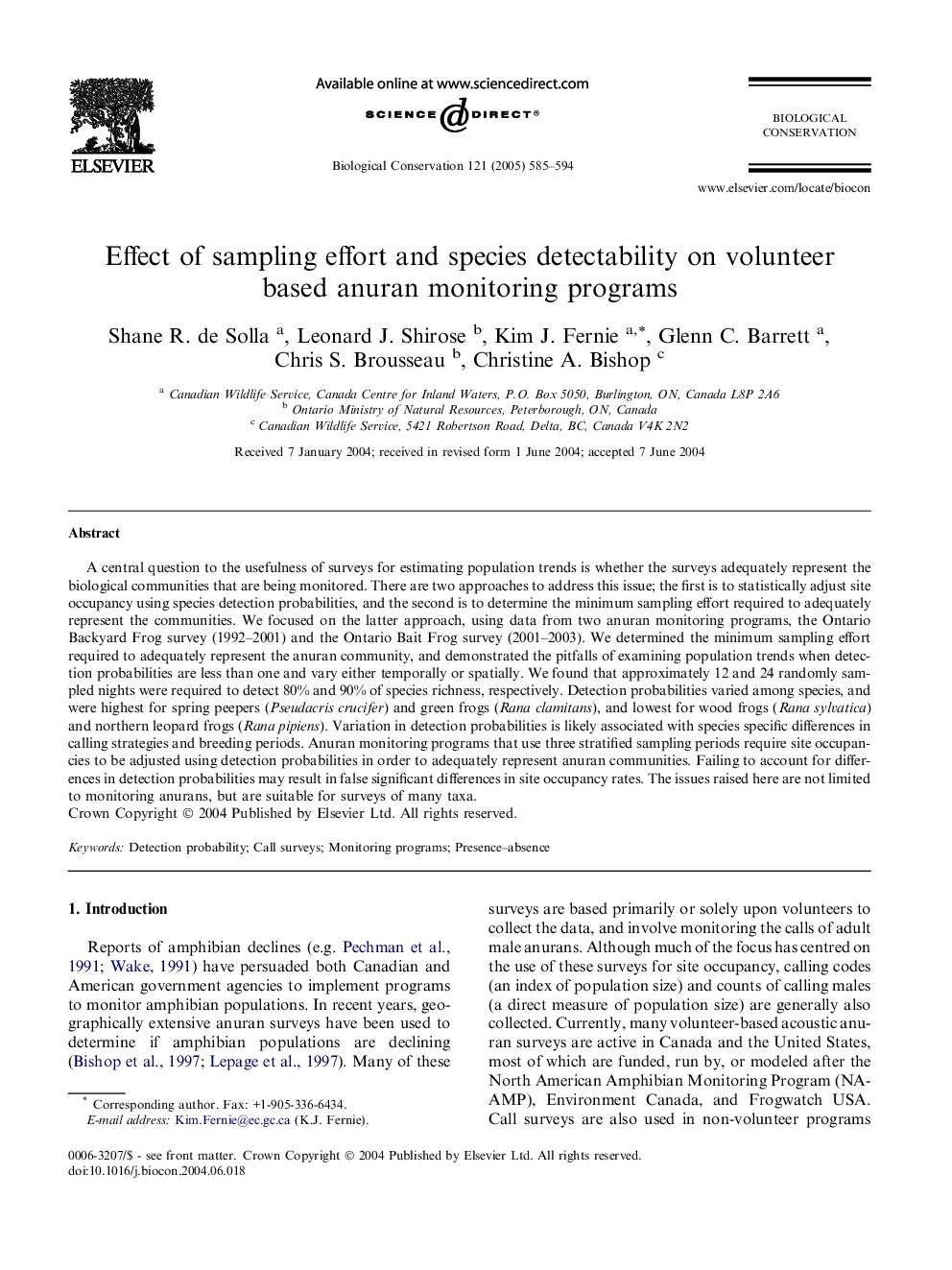| Article ID | Journal | Published Year | Pages | File Type |
|---|---|---|---|---|
| 9446234 | Biological Conservation | 2005 | 10 Pages |
Abstract
A central question to the usefulness of surveys for estimating population trends is whether the surveys adequately represent the biological communities that are being monitored. There are two approaches to address this issue; the first is to statistically adjust site occupancy using species detection probabilities, and the second is to determine the minimum sampling effort required to adequately represent the communities. We focused on the latter approach, using data from two anuran monitoring programs, the Ontario Backyard Frog survey (1992-2001) and the Ontario Bait Frog survey (2001-2003). We determined the minimum sampling effort required to adequately represent the anuran community, and demonstrated the pitfalls of examining population trends when detection probabilities are less than one and vary either temporally or spatially. We found that approximately 12 and 24 randomly sampled nights were required to detect 80% and 90% of species richness, respectively. Detection probabilities varied among species, and were highest for spring peepers (Pseudacris crucifer) and green frogs (Rana clamitans), and lowest for wood frogs (Rana sylvatica) and northern leopard frogs (Rana pipiens). Variation in detection probabilities is likely associated with species specific differences in calling strategies and breeding periods. Anuran monitoring programs that use three stratified sampling periods require site occupancies to be adjusted using detection probabilities in order to adequately represent anuran communities. Failing to account for differences in detection probabilities may result in false significant differences in site occupancy rates. The issues raised here are not limited to monitoring anurans, but are suitable for surveys of many taxa.
Related Topics
Life Sciences
Agricultural and Biological Sciences
Ecology, Evolution, Behavior and Systematics
Authors
Shane R. de Solla, Leonard J. Shirose, Kim J. Fernie, Glenn C. Barrett, Chris S. Brousseau, Christine A. Bishop,
